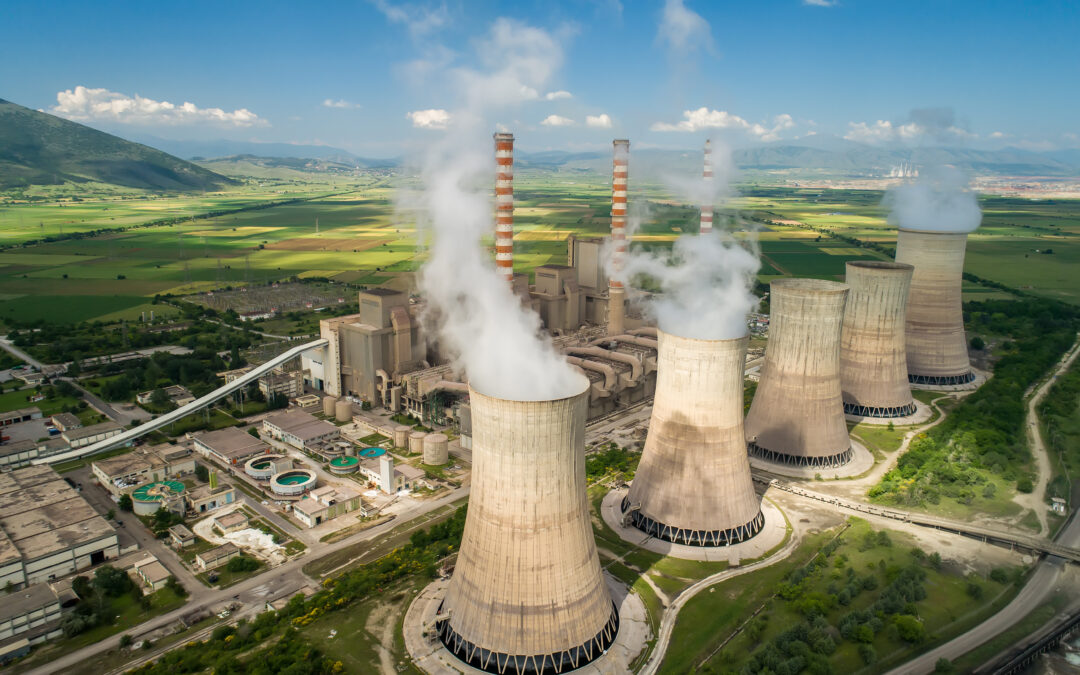Nuclear energy is an increasingly attractive option for investors looking to support clean energy initiatives while seeking potentially high returns. As the world shifts toward sustainable energy sources to combat climate change, nuclear power stands out due to its low carbon emissions and high energy output. According to Energy.gov, “Nuclear energy protects air quality by producing massive amounts of carbon-free electricity. It powers communities in 28 U.S. states and contributes to many non-electric applications, ranging from the medical field to space exploration.”
Why Invest in Nuclear Energy?
- Clean Energy Source: Nuclear power is one of the cleanest energy sources, producing minimal greenhouse gas emissions compared to fossil fuels. It generates power through fission, the process of splitting uranium atoms to produce energy. The heat release by fission is used to create steam that spins a turbine to generate electricity. Unlike fossil fuels, this process does not emit harmful byproducts. All of the used nuclear fuel produced by U.S. nuclear energy industry over the last 60 years is roughly the size of a football field with about 10 yards of depth. This aligns with global efforts to reduce carbon footprints and transition to a sustainable energy future.
- High Energy Output: Nuclear power plants generate a significant amount of electricity from a small amount of fuel, making it a highly efficient energy source. According to Energy.gov, nuclear power provided 56% of America’s carbon-free electricity in 2017. A typical reactor produces around 1 gigawatt of power which is the same amount of power as 100 million LED bulbs, 431 utility-scale wind turbines, or 3.125 million PV panels. The common 1,000-megawatt nuclear facility in the United States needs just over 1 square mile to operate.
- Energy Security: Investing in nuclear energy can enhance energy security by reducing dependence on imported fossil fuels. Nuclear power plants require less maintenance and are designed to operate for longer stretches before refuiling than coal and natural gas. Per an energy.gov factsheet, in 2017, nuclear power plants operated at full capacity more than 92% of the time, which was nearly twice as much as coal (54%) and natural gas (55%). It was also 2 to 3 times as much as wind (37%) and solar (27%), because nuclear power can be generated even on windy days and cloudy days.
- Technological Advancements: Innovations in nuclear technology, such as small modular reactors (SMRs) and advanced reactors, promise safer, more efficient, and cost-effective solutions. Three advancements looking to debut by 2030 are sodium-cooled fast reactors, very high temperature reactors, and molten salt reactors. These advancements could drive growth and investment opportunities in the sector.
Key Areas for Investment
- Nuclear Power Plants: Investing directly in companies that build and operate nuclear power plants may provide satisfactory returns. These companies are often involved in the entire lifecycle of nuclear energy production, from construction to waste management.
- Uranium Mining: Uranium is the primary fuel used in nuclear reactors. Investing in uranium mining companies may be a lucrative investment, especially if demand for nuclear energy increases globally, as we believe it will.
- Technology and Innovation: Companies developing advanced nuclear technologies, such as SMRs and fusion reactors, are at the forefront of the industry’s future. Investing in these companies may offer high growth potential.
- Nuclear Fuel Cycle: This includes investments in fuel fabrication, enrichment, reprocessing, and waste management. Companies involved in these processes are critical to the nuclear energy supply chain.
Risks and Considerations
- Regulatory Challenges: The nuclear energy sector is heavily regulated, and changes in government policies can impact investments. It’s essential to stay informed about regulatory developments and their potential effects.
- Public Perception: Nuclear energy faces public skepticism due to past accidents and concerns about radioactive waste. Effective communication and transparency are crucial for maintaining public support.
- High Initial Costs: Building nuclear power plants requires substantial capital investment. Investors need to consider the long-term nature of these investments and the potential for delayed returns.
- Market Competition: The rise of renewable energy sources like solar and wind presents competition for nuclear energy. However, nuclear offers around the clock generation capacity.
Conclusion
Nuclear energy offers a compelling opportunity to support the global transition to clean energy while potentially generating a satisfactory financial return. By focusing on companies involved in nuclear power generation, uranium mining, technological innovation, and the nuclear fuel cycle, investors can position themselves at the forefront of this dynamic and evolving industry. However, it’s crucial to be aware of the risks and challenges, including regulatory hurdles and public perception, to make informed and strategic investment decisions. Seeking advice from an experienced advisor can help you navigate renewable energy investments and determine what is best for your portfolio.
This article is prepared by Pekin Hardy Strauss, Inc. (“Pekin Hardy,” dba Pekin Hardy Strauss Wealth Management) for informational purposes only and is not intended as an offer or solicitation for business. The information and data in this article does not constitute legal, tax, accounting, investment, or other professional advice. The views expressed are those of the author(s) as of the date of publication of this article and are subject to change at any time due to changes in market or economic conditions. Pekin Hardy cannot assure that the strategies discussed herein will outperform any other investment strategy in the future.

